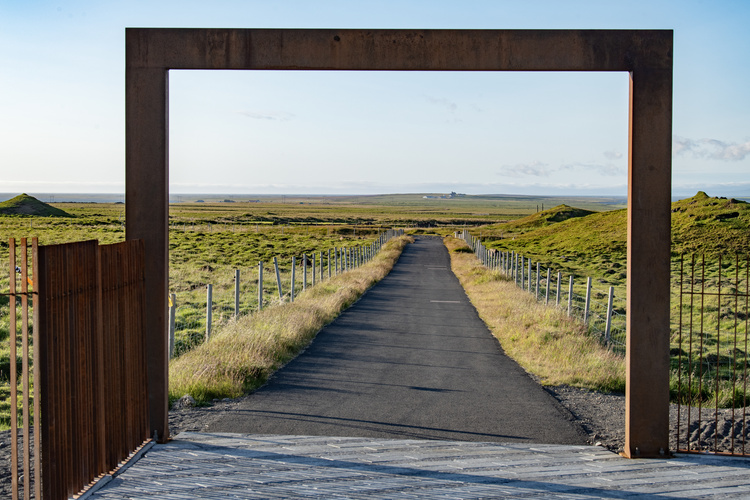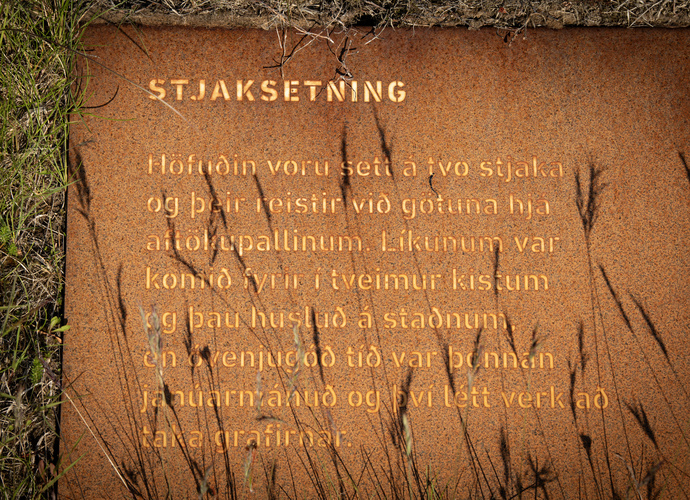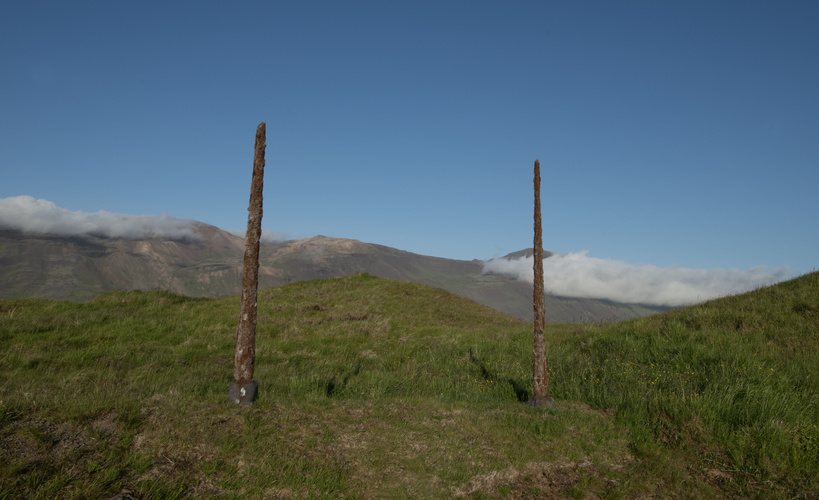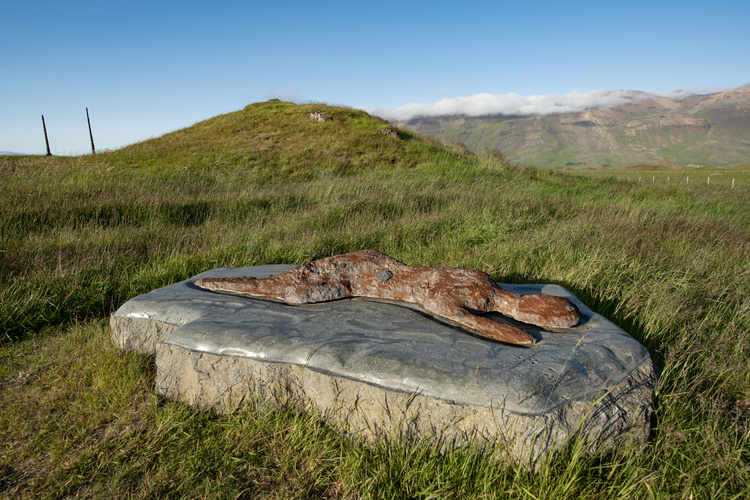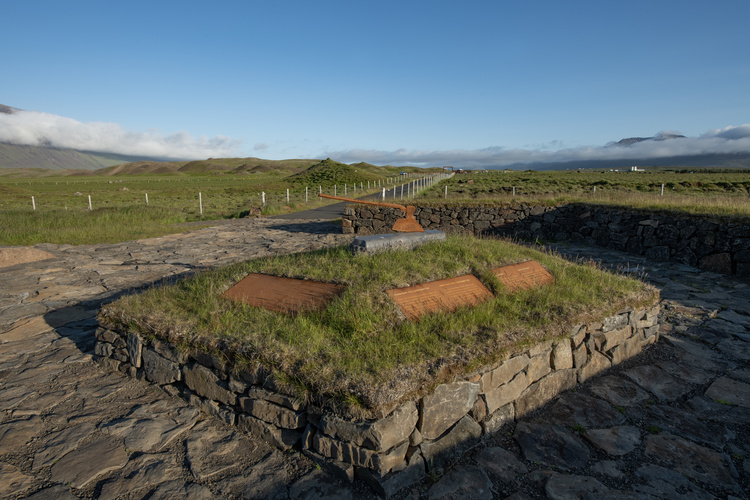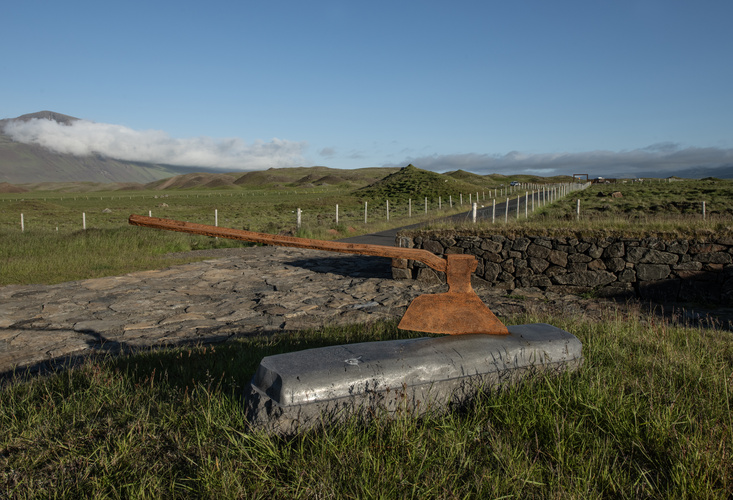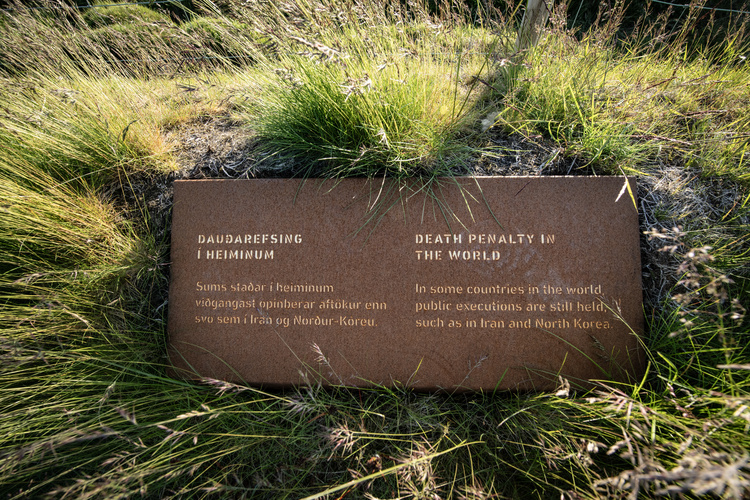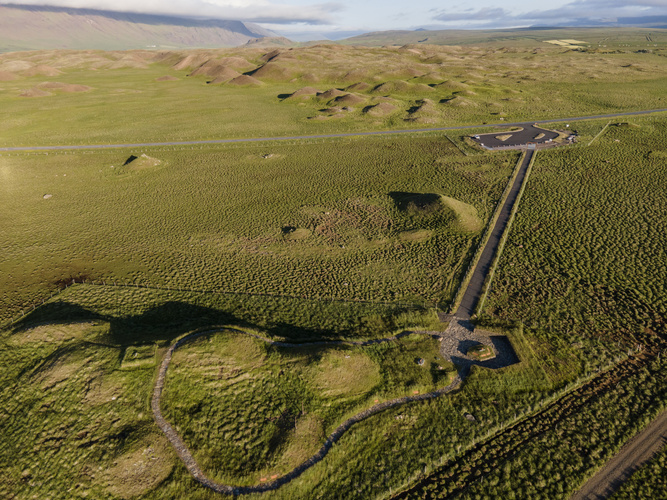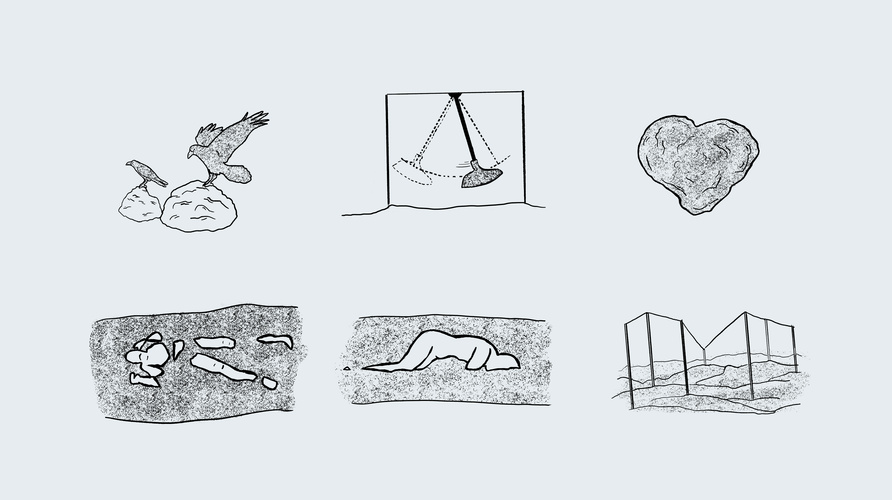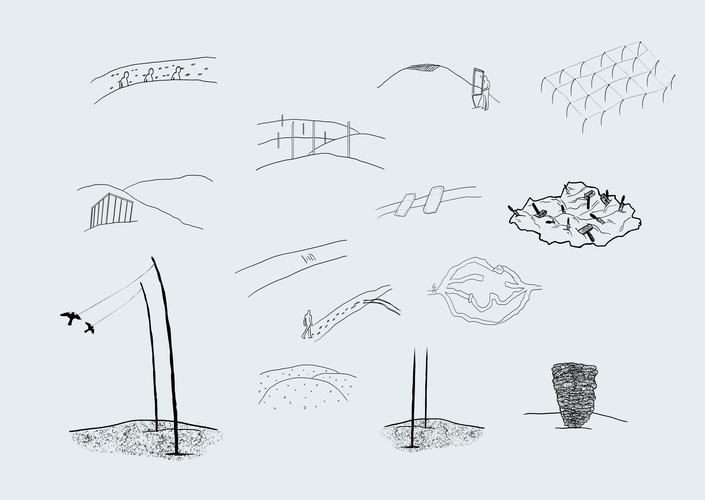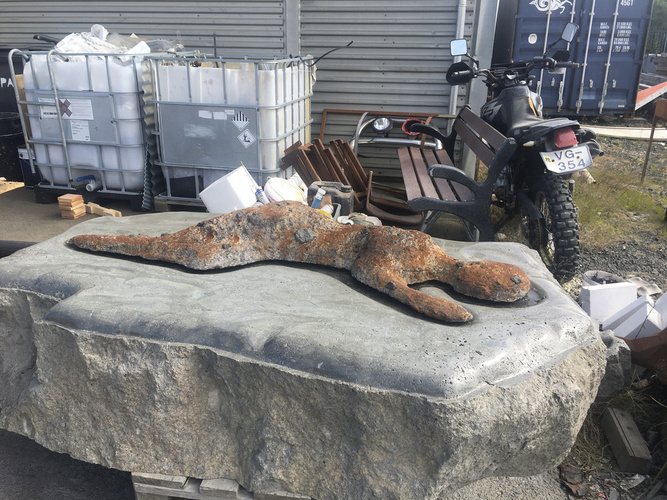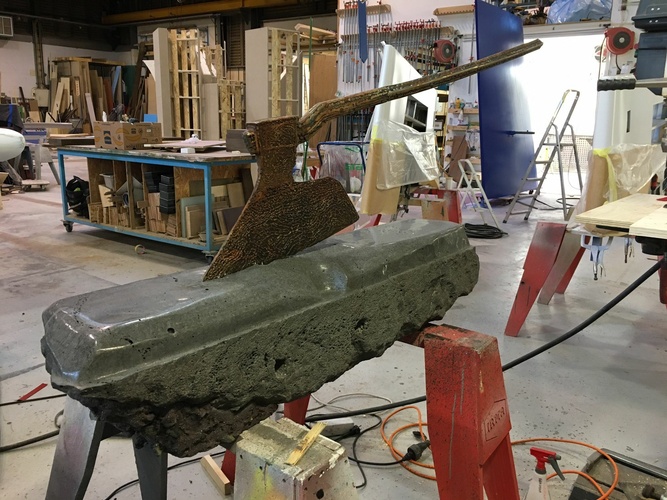Þrístapar
Iceland
The last recorded execution in Iceland took place at Þrístapar in 1830, where Agnes and Friðrik were beheaded for the murders of Natan and Pétur. Agnes, aged 32 at the time, had experienced underprivilege and poverty since birth. It is believed that she conspired to commit the murders with Friðrik, who was only 18 years old at the time. Their heads were placed on spikes as a deterrent to other potential criminals. Icelanders have consistently expressed sympathy for Agnes and Friðrik, as Natan was known for his extreme violence and oppression within his household, which allegedly motivated the pair to carry out the murders.
Photos: Róbert Daníel Jónsson

Gagarín orchestrated an outdoor exhibition on-site at Þrístapar, allowing visitors to familiarize themselves with the narrative of Agnes and Friðrik as they approach the execution platform, which still stands. The compelling storyline is complemented by art installations and excerpts from literature recounting the events, including the renowned "Burial Rites" by Hannah Kent.
Collaborators:
Inga Rut Gylfadóttir at Landslag
Harry Jóhannsson at Irma
Bjarni Þór Einarsson at Ráðbarður
Gerður Kristný
I don't think I'm ready. I don't think they can do it. Can you make them wait? They have to wait. Hannah Kent – Burial Rites (2014)

According to some witnesses, Agnes was unconscious when she was executed. It is said that the reverend, who accompanied her, held her hair away from her neck while she was decapitated.

In 1934, more than a century after the execution, the medium, Sesselja Guðmundsdóttir, came into contact with Agnes who wanted her and Friðrik‘s bones to be buried in consecrated ground. Sesselja pointed to the graves. The coffins were then found along with the skulls of Agnes and Friðrik.
The destination Þrístapar by Gagarín, Landslag and Harry Jóhannesson is nominated as Place of the Year at the Icelandic Design Awards 2024.

